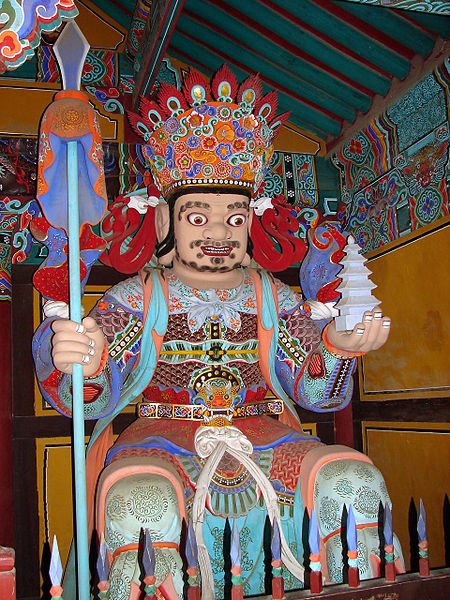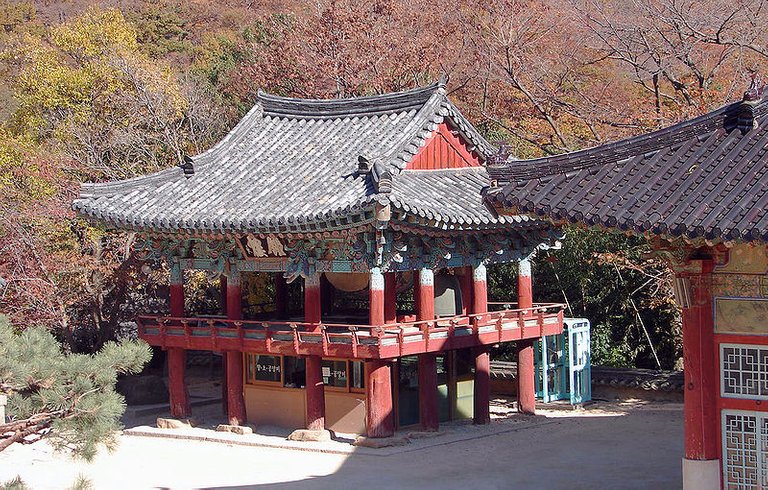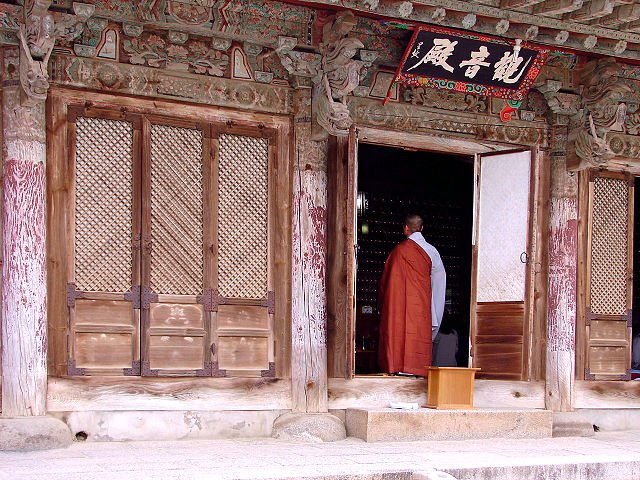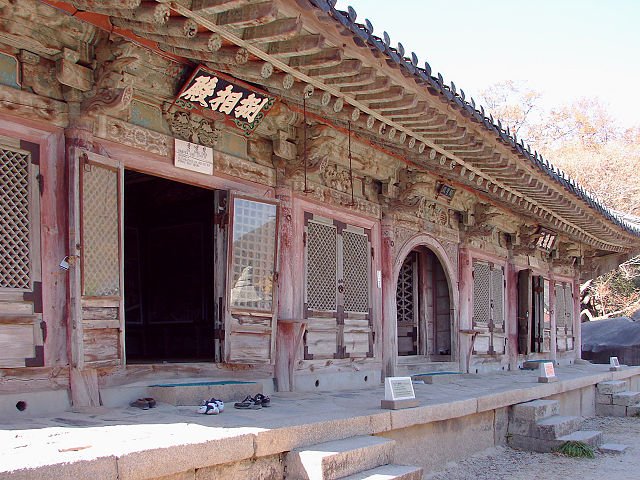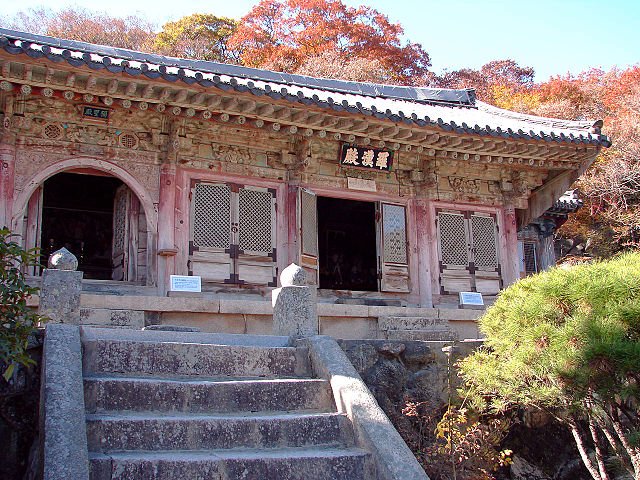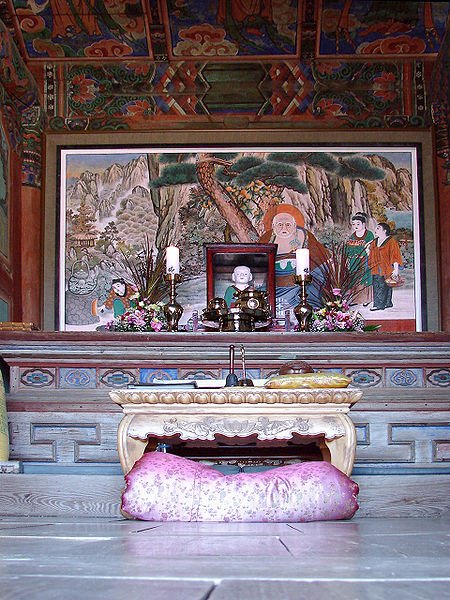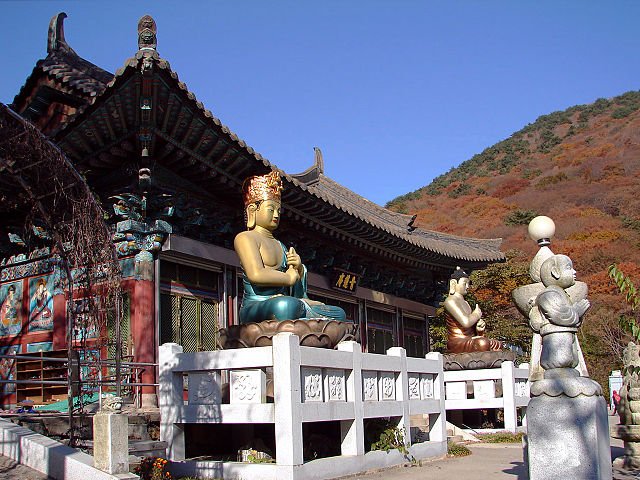Korean Temple - Beomeosa
Introduction :

Vaisravana :
The Guardian of the North, with his decorated spear and stupa, is located in the temple's second gate
Temple Courtyard :
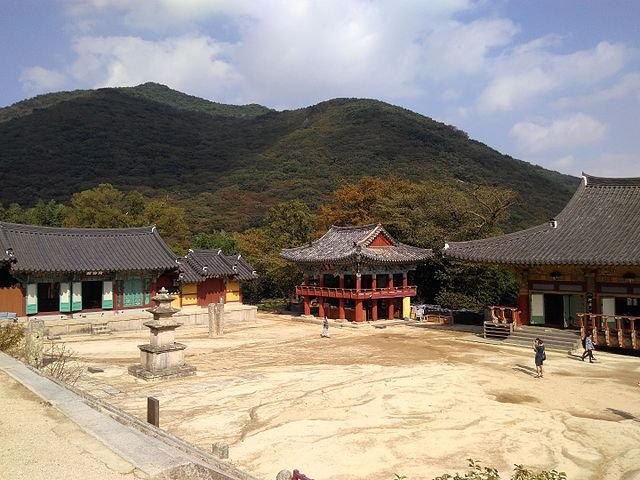
This photo shows (l. to r.) the Maitreya Hall, three-story pagoda, gate into the Meditation Center, flagpole support, bell tower, path leading down to the entrance, and part of the lecture hall. The vantage point is from the upper platform that supports the Main Hall.
After taking a spin around the courtyard (below), we will then (following pages) take a closer look at some of the buildings and their interiors.
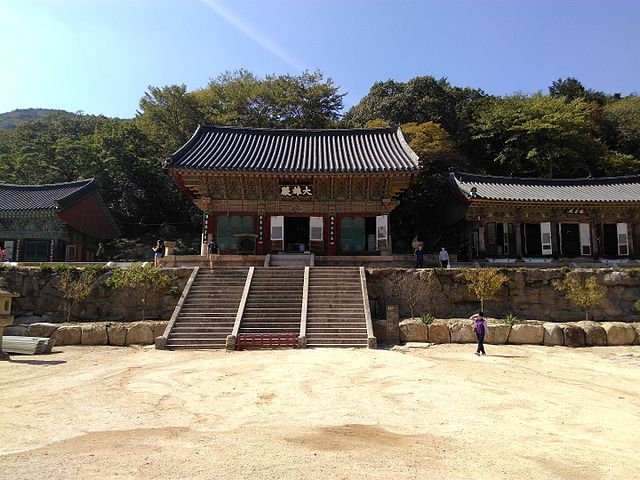
The Main Hall (center), Avalokiteshvara Hall (right), and Judgement Hall (left) are located on the upper platform.
Bell Tower :
The bell tower is an 1889 rebuild of the 1613 original. It contains four large percussion instruments (samul): a bronze bell, bronze cloud-shaped gong, wooden drum, and wooden fish-shaped gong.
Three Story Pagoda :
The stupa dates to the 9th century (Silla); its base was added later. The building in the background photo right is the Maitreya Hall.
Statue of Vairocana :
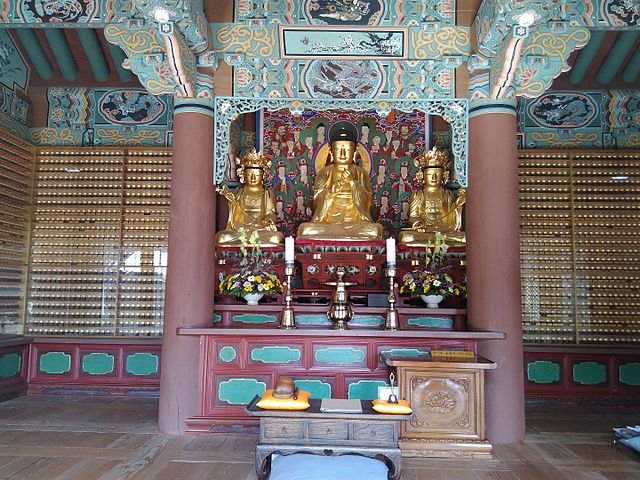
Vairocana is making his typical "knowledge fist" mudra, and is flanked, according to a temple guide, by Munsoo (Manjusri, l.) and Bohyun (Samantabhadra, r.). However, the Buddhas of the Past and Future in the Main Hall (next page) look almost identical to these figures.
Main Hall :
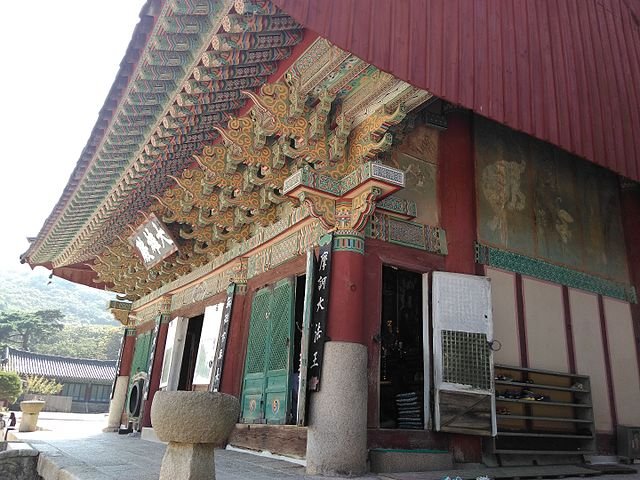
The Main Hall (Daeungjeon) was built in 1614 with major renovations in 1713, 1814, and 1871.
Avalokiteshvara Hall :
This hall, located just to the right of the main hall (previous page), enshrines an image of the savior bodhisattva
Jijangjeon Hall :
Jijangjeon (1613) is a hall dedicated to the savior bodhisattva Ksitigarbha, who saves sinners from hell. Rebuilt in 1891, the hall burned down in 1988, and was rebuilt again in 1990. It is located just to the left of the Main Hall; behind and above it, at photo left, can be seen a small bit of the Arhats Hall (later page).
Palsangjeon Hall :

Palsangjeon is the leftmost of the three shrines that are shown in the upper photo. Built in the Late Joseon period, Palsangjeon displays eight large paintings that illustrate scenes from the life of the Buddha.
In the middle photo, from right to left, we see Buddha's Departure from the Palace, Enlightenment, and Parinirvana.
The bottom photograph shows Shakyamuni in triad with two unidentified attendants.
Dokseongjeon and Nahanjeon Halls :
Dokseongjeon is the shrine at photo left, distinguished by its arch-shaped entrance. This shrine is dedicated to the Hermit Sage (middle photo), a recluse who lives in solitude while striving for enlightenment.
The shrine at photo right is Nahanjeon, an Arhat Hall. Buddha's followers (bottom photo) are imagined here as decorous monks, rather than the wild "mountain men" that one often see in statues from China and Japan.
Mountain God Hall :
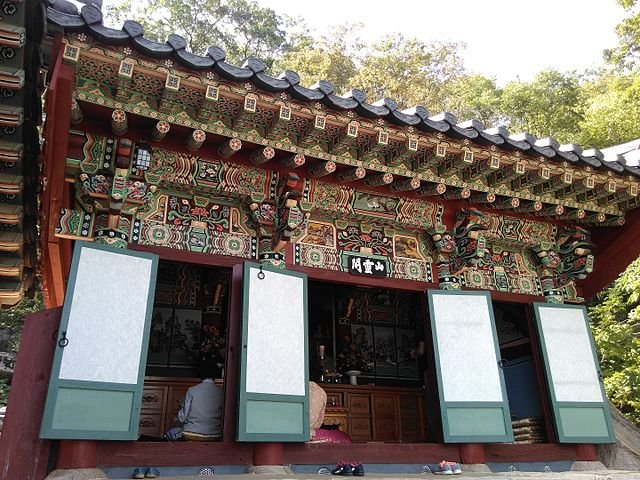
No visit to a Korean mountain temple would be complete without paying respects to the mountain god. This hall is tucked away -- and quite appropriately so -- beside the Arhat shrine seen on the previous page; for Arhats, too, are associated with the mountains. Although it may not catch the eye at first glance from down below, the shrine opens up beautifully when you approach on its own level (middle photo). The lower photo of the shrine interior leaves much to be desired because of some unfortunate glass reflections, but it is the only one I have. Perhaps the god was feeling shy that day.
Cheongnyeonam Hermitage :
Cheongnyeonam is one of eleven hermitages attached to the temple. It is a modern foundation, associated with the Seonmudo martial arts revival; the hall seen in the top photo is decorated with paintings of practitioners. Information about the hermitage can be found under two different spellings: Cheongnyeonam (RR) = Chungryunam (McR)
Buddha Land Statues :
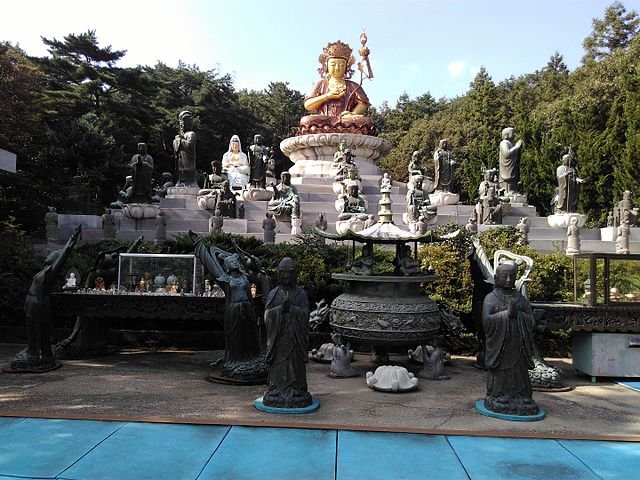
A large outdoor display of modern bronze statues evokes a Buddhist paradise, where Buddhas, Bodhisattvas, monks, guardians, and apsarasas bask in the radiance of the divine.
